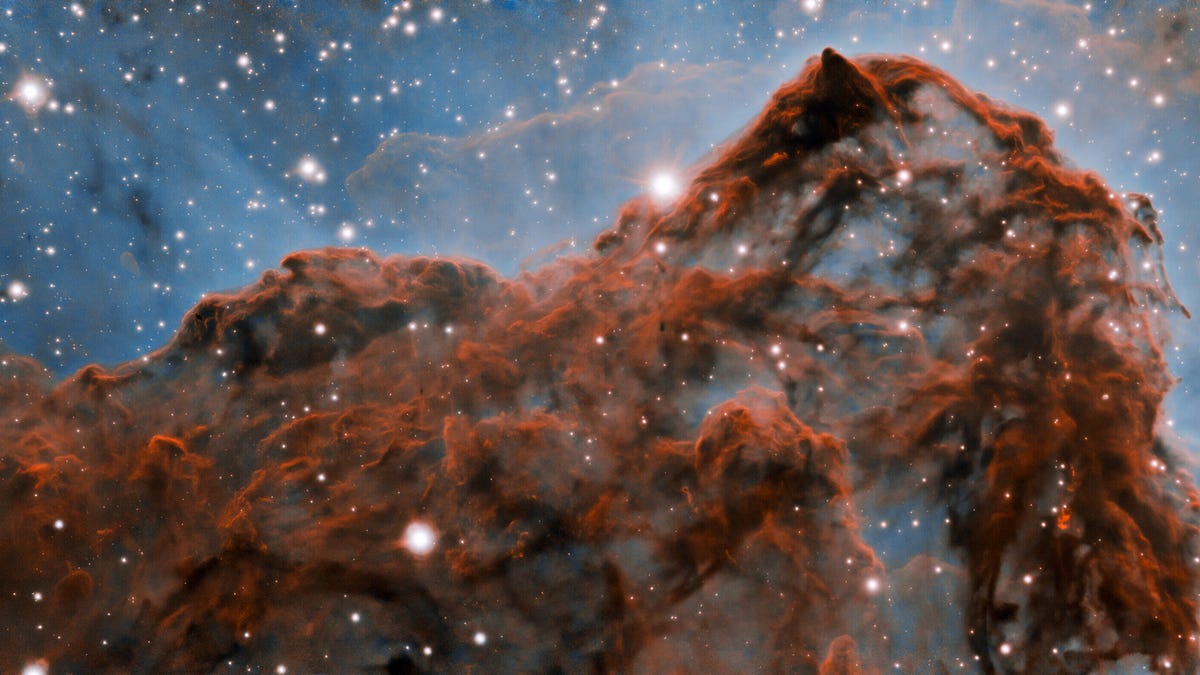Carina Nebula's wild tendrils star in extraordinary image of stars being born
A sharply detailed new view of a stellar nursery gives a preview of what we can expect from NASA's James Webb Space Telescope.
The birth of stars is a gassy and dusty affair, but it's also visually glorious. A new image from the Gemini South telescope in Chile brings the stellar nursery of the Carina Nebula into startlingly sharp focus.
Astronomers are looking to the Carina Nebula to learn more about star formation. The image released Monday shows an intricate dance of glowing gas and dust in the "Western Wall" along the edge of the nebula.
The secret sauce is the telescope's adaptive optics. "Adaptive optics compensates for the effects of turbulence in the Earth's atmosphere to produce pin-sharp images, comparable to those from a space telescope," said the National Science Foundation's NoirLab in a statement on Monday. NoirLab operates the Gemini Observatory.
By observing the nebula in infrared light, we're able to see "the sharpest view to date of how massive young stars affect their surroundings and influence how star and planet formation proceeds."
The team behind the image, led by astronomers at Rice University, published a paper on the achievement in The Astrophysical Journal Letters on Monday. Lead author Patrick Hartigan called the results "stunning."
The Gemini image gives a taste of what we can expect from next-generation space telescopes like NASA's delayed James Webb.
"Structures like the Western Wall are going to be rich hunting grounds for both Webb and ground-based telescopes with adaptive optics like Gemini South," Hartigan said in a statement from Rice. "Each will pierce the dust shrouds and reveal new information about the birth of stars."


